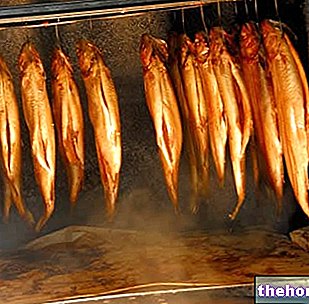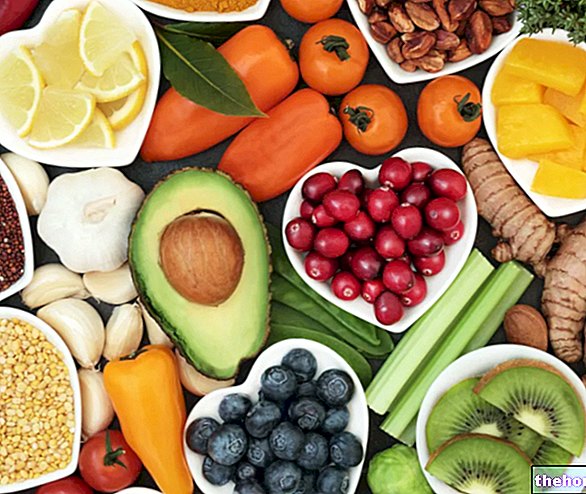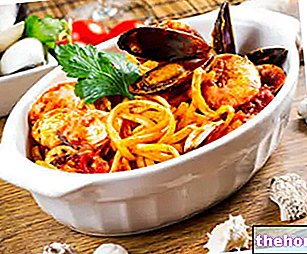Introduction
Drowsiness? Headache? Tiredness? One solution to these problems is simple: it's called caffeine.
Few are aware of 1,3,7-trimethylxanthine, but if it is called caffeine, everyone understands what it is: a characteristic substance of coffee, normally consumed by people, belonging to the alkaloid family and contained in fruits, leaves and seeds of many plants.

Sources of caffeine
By definition, the plants rich in caffeine are coffee, cocoa and tea, but it must not be forgotten that foods containing caffeine are also others, albeit little known in our country; we are talking about mate, guarana and kola nuts. The common thread of these foods is precisely caffeine: this substance always acts in the same way, and this applies to all nerve foods, even if it can be positively or negatively modulated by the phytocomplex.
Before analyzing the foods that contain caffeine, two tables are shown below which indicate, respectively, the amount of caffeine contained in the foods (A.) and the amount of caffeine that the raw materials contain (B.)
TO.
NERVINE FOOD
QUANTITY OF CAFFEINE
Coffee powder
1000-3000 mg / 100 g
Espresso
60-120 mg / cup
Mocha coffee
100-150 mg / cup
Neapolitan coffee
60-130 mg / cup
Decaffeinated coffee
2-5 mg
Tea (long brew)
40-50 mg / 100 g
Cocoa powder
100 mg / 100 g
Chocolate (bars)
50 mg / 100 g
Chocolate (cup)
10/40 mg / cup
Cola-type drink
20-30 mg / can (33 cc)
B.
RAW MATERIAL
QUANTITY OF CAFFEINE
Coffee - seeds
1-2% caffeine
Tea - leaves
2-3% caffeine, theobromine and theophylline
Cola - walnut
3% caffeine
Cocoa - seeds
Traces of caffeine, 2% theobromine
In table B there are also other exciting substances (theobromine and theophylline), which act in an almost identical way to caffeine.
Effects and contraindications of caffeine
Foods containing caffeine are classified as powerful vasoconstrictors: from here it is clear why caffeine is not recommended for those suffering from hypertension. Considering then that caffeine exerts its action by stimulating the body to wakefulness, subjects suffering from insomnia should avoid foods containing caffeine, in order not to run the risk of staying up all night. The recommendation is also valid for individuals suffering from gastritis, peptic ulcer, gastroesophageal reflux, arrhythmias, tachycardia and osteoporosis.
An excess of caffeine can cause palpitations, nausea, insomnia and loss of appetite. Generally, the side effects of caffeine occur at dosages above 200 mg, but there is considerable individual variability in this regard. But why are some people not very affected by the effects of caffeine?
To answer this question, there are those who associate caffeine with alcohol: two substances that are tolerated differently from person to person. Tolerance is generally much higher in regular coffee drinkers or in those who regularly take caffeine supplements.
The coffee
As we have seen, among the foods richest in caffeine, the scepter - at least for notoriety - belongs to coffee. Caffeine is found in the beans of the plants, which before being ground are roasted at temperatures exceeding 200 ° C: during this process, the caffeine is partly lost and substances are formed which are used to define the aroma of the coffee.
The coffee we are used to drinking is very flavored, because it undergoes a long roasting process, however it has a relatively low amount of caffeine. Going to the countries of Northern Europe and drinking the local coffee, we realize that the food in question is less flavored, but the quantity of caffeine is very high: this is because the roasting process takes place at lower temperatures.
Tea
Tea is also a nerve food; like coffee, it is considered a non-nutritive food component (non nutritive dietary component). Tea provides calories only when sweetened or if other foods, such as milk, are added.
There are various categories of tea (white, green, oolong and black), which differ from an aromatic and compositional point of view.
As already mentioned, different categories of methylxanthines are contained in tea: theobromine, theophylline and caffeine. The quantity of the same varies according to the category of tea considered: in fact, black tea contains mainly caffeine (2.5 - 5.5% of caffeine in the leaves), only in trace amounts theobromine and theophylline.
Cocoa
In cocoa, caffeine is present in much lower quantities than in tea and coffee. It is good to know, however, that cocoa is considered an "exciting" food thanks to the presence of theobromine.
Although only traces of caffeine are recorded in cocoa, the effects of theobromine have been shown to be virtually identical to those of caffeine. This explains why chocolate is recommended for those people who tend to low blood pressure, who feel fatigued and who experience a decrease in attention. For the same reason, it is not recommended to take this food before going to sleep. , because it stimulates the nerve centers causing the body to wake up.
Mate, kola nut and Guarana
Mate, kola nut and guarana are used for the manufacture of foods, in particular drinks: also in this case we are talking about nerve foods, very sold especially in America. In addition, mate, kola nut and guarana represent the basis for some food supplements known as "tonic and tonics".
The matè stimulates the appetite and contains caffeine in variable quantities ranging from 0.5 to 1.5%; It is good to remember that when preparing a food based on mate, only a part of the caffeine is extracted: the remainder remains in the leaves.
Kola nuts are used for the production of stimulating foods, thanks to the consistent amount of caffeine, which reaches up to 5%.
For the extraction of caffeine from guarana, on the other hand, the seeds are used: the extract boasts, also in this case, tonic and exciting properties.
Some energy drinks, better known as energy drinks, contain very high levels of caffeine (even 320 mg / l), despite the fact that Article 15 of Presidential Decree 719/1958 states that the maximum permitted levels of caffeine in coca are 125 mg / l and 89 mg / l in pepsi cola In Red Bull and Burn Energy drink caffeine reaches 320 mg / l.
It would be good not to abuse these foods to avoid unpleasant side effects of hyperexcitability, insomnia, nausea and restlessness.
The coffee...
Black as the devil, hot as hell, pure as an angel, sweet as love
Charles Maurice de Talleyrand




























